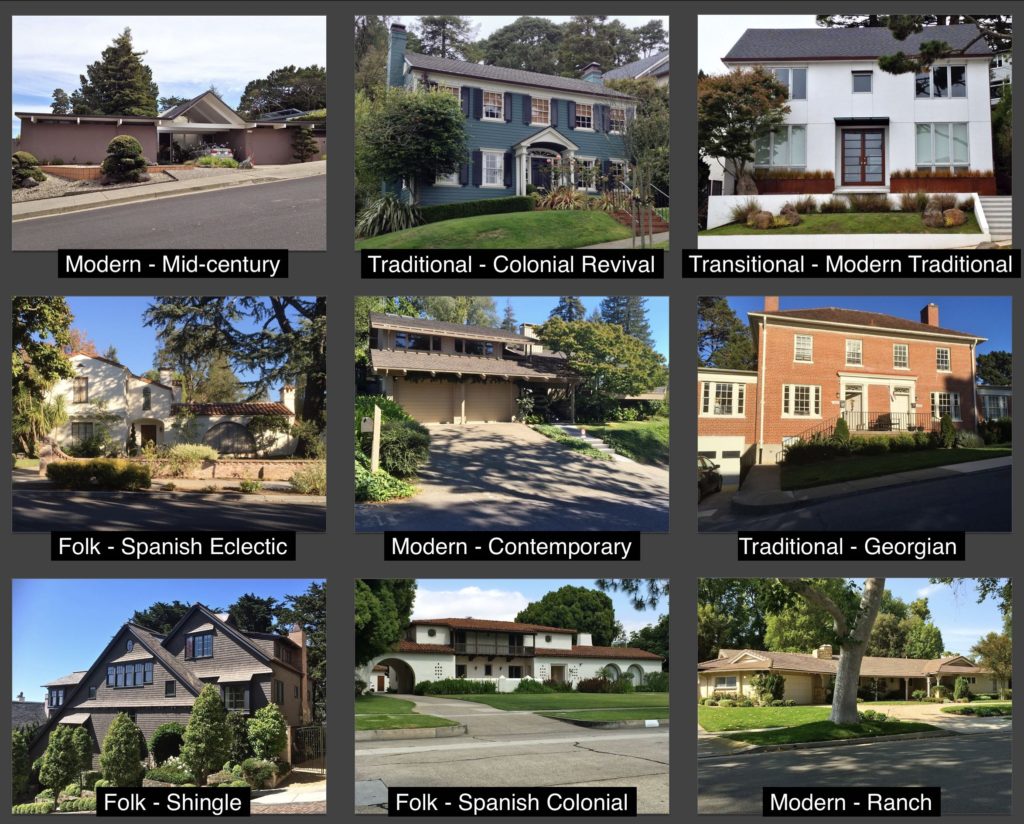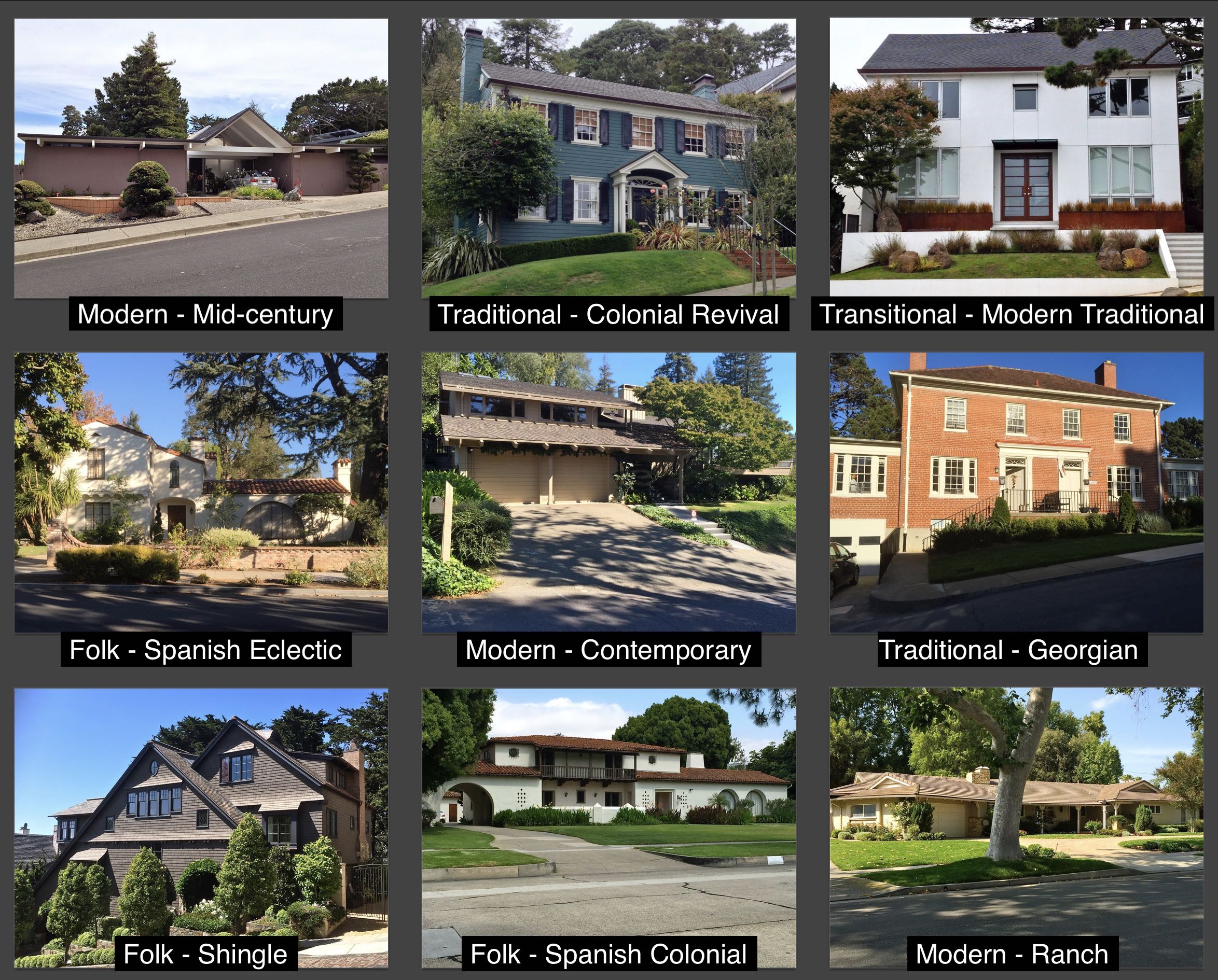Where do we derive the term “mid-century modern?” What makes the style identify as such? How is modern distinguished from other fashions of architecture? To begin to answer these questions, let’s break down architectural styles into three primary groups.
First, there is Traditional architecture. This theme arose from the Renaissance study of ancient Greek and Roman ruins. The classical architects developed a sumptuous system of order and proportion, and Classical buildings with magnificent detail surround us in Western culture to this day. Many domed state capitols are classical or traditional design, as is the U. S. capitol building. The Greek Revival, the Colonial Revival, and the Georgian style exemplify Traditional home design.
The second primary style is rooted in folk architecture, which refers to design that develops regionally and evolves into a distinctive character unique to its location. Mediterranean or Spanish styles are good examples though they may mix classical architecture, in small amounts, into the style. Regionally developed characteristics of local building customs deliver distinctive traits that set folk design unique among its neighbors. As examples, imagine the white-washed stucco with blue-tiled roofs of the villas found in the Greek islands or the blockish forms with clay-colored plaster over adobe bricks of the Ameican southwest characteristic of the Pueblo Revival style. These regionally developed and embraced fashions of buildings, we identify as folk or vernacular architecture.
The third primary style is, of course, modern. Relating to the present or recent times is the definition, and more specifically, contemporary architecture departs from the past quite intentionally. In its ideal, modern architecture attempts to use minimum structural composition and materials and highlight those elements to deliver the aesthetic. A modern design also employs advanced technologies in machine-fabricated components and newly developed structural efficiencies. Compare the great Gothic cathedrals of Europe, which reached phenomenal heights with flying buttresses made of stone, with the light steel skeletal framework of the contemporary skyscraper, and you grasp the fashion influenced by structural elements. Landmark churches and high-rises could not be more different in their approach to design. The Gothic style marked an era of hundreds of years while looking back into structures of ancient classicism, but the modern skyscraper relies on new structural advancements delivering its aesthetic.

In Virginia McAlester’s seminal book, A Field Guide to American Houses, she places the mid-century modern home within her chapter on the Contemporary style. “Modern Houses (1900-present)” is the primary category in her book, which holds a sub-category called “Mainstream Modern,” within which the Contemporary chapter occurs. McAlester brings up the term “Mid-century Modern” only at the end of her Contemporary style Comments. In her view, mid-century modern connotes a broader array of styles of objects and architecture of that period. At the time, homes fashioned with modern architecture were “contemporary” or simply “modern.” Her point is that other specific styles of the same era, such as Shed or Ranch, are considered mid-century modern in theme.
The term “mid-century modern” did not enter the common lexicon until the late 1990s, when an enthusiastic nostalgia for American modernism of the mid-20th century blossomed. An affection grew further for mid-century modernism at the turn of the millennia. Entertainment productions set in the 1960s, such as the popular Netflix original series, Mad Men, captured the attention of millions of Baby Boomers who grew up surrounded by icons of modernist design. It did not matter whether or not someone once lived in such houses or owned iconic furnishings; everyone had a connection to Saarinen or Eames or many other important 20th-century modern design stars. Americans identified with the era’s design aesthetic, whether in homes, cars, clothing, or industrial design. The images were and are indelible, as is all good design. In reality, preferences constrained taste for modern design in the 20th century; however, it is perhaps the strength and quality of the contemporary theme of the 1920s through the early 1970s that established mid-century minimalism as a highly regarded and critical point in modern American culture. The residential architecture delivers just one facet of that modernism.
In 2006, the first annual Modernism Week took place in Palm Springs, California. The event complemented the preceding Palm Springs Modernism Show & Sale and a design symposium sponsored by the Palm Springs Art Museum. A few thousand attendees gathered for lectures, tours, and parties in early February of that year. Palm Springs’s collection of extraordinary contemporary architecture, both residential and commercial, lured enthusiasts from around the globe into the following years. The desert resort city’s history and location garnered the attention of The National Trust for Historic Preservation, which listed Palm Springs as one of America’s “Distinctive Destinations.” Attendance for Mod-Week grew to over 160,000 by February of 2020. (Take note that the population of Palm Springs is only about 45,000 residents.) Hundreds of events held over ten days delivered a whopping $60-million-dollar impact on the local economy.
Mid-century Modern is more than a style; it is a lifestyle. The quest for contemporary design and the desire for living in a clean and clutter-free environment proves in demand well into the 21st century. While Palm Springs holds an unusually high concentration and remarkable collection of contemporary homes, the same aesthetic proliferated throughout North America. Most metropolitan regions contain individual examples or small neighborhoods of modern homes from the mid-century period.
Next time, we will delve into the history of how the mid-20th-century modern home style roots from the early modern movement from the art of the late 1800s and the broadly accepted International style that foreshadowed the popularity of mid-century modernism. It is a mixture of many economic and cultural forces that culminated in a booming post World War II American economy. Stay tuned!

